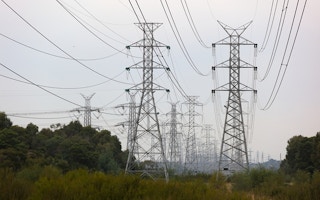Australia’s greenhouse gas emissions from the electricity sector are down about 7.6 per cent since the carbon tax was introduced in July 2012, or the equivalent of about 14.8 million tonnes.
This reduction, revealed in the September-quarter National Greenhouse Gas Inventory figures released on Wednesday, was mostly countered by rises in emissions from sectors of the economy uncovered or only partially covered by the carbon price.
The total emissions, excluding increases in emissions from land-clearing, came in at 542.1 million tonnes of carbon dioxide equivalent for the year to September, or 0.3 per cent lower than a year earlier. When changes in land use are added, overall emissions for the 12 months came to 567.5 million tonnes, or 1.2 per cent higher.
The inventory figures have largely tracked a similar path for many quarters. Emissions from the power sector have been dropping, particularly since the introduction of a $23 a tonne price on carbon in mid-2012, making renewable energy supplies more attractive. Demand for electricity has also been dropping as manufacturing shrinks and energy efficiency efforts take hold.
Pollution from transportation, not covered by the carbon tax, has been rising steadily, while emissions from coalmine expansion and new gas plants have been soaring. The latter two sources are only partially covered by the carbon tax, now at $24.15 per tonne, with offsets or free permits reducing the cost to polluters.
“
Significant decreases in the electricity sector emissions have been neutralised by increasing fugitive emissions because of the Abbott government’s open slather rush to support the dangerous coal seam gas industry and coal mines
Senator Christine Milne, Leader of the Australian Greens
John Connor, chief executive of the Climate Institute, said companies in sectors with rising emissions, such as industrial processes, were often the recipients of free permits, particularly in trade-exposed industries.
‘Major headache’
For liquefied natural gas producers, the free permits covered about 65 per cent of their emissions, Mr Connor said.
‘‘We’re just at the dawn of their emissions profile, and they’ll be really starting to crank up particularly towards the end of this year,’’ he said. ‘‘They will be one of, if not the major headache for the Coalition which is why they are desperate to find ways to slice off growth of emissions in that sector.’’
Fugitive emissions, mostly from coal mining, were up 8.3 per cent for the year to September, while transport emissions rose 2 per cent, agriculture 1.8 per cent and industrial processes saw a 0.4 per cent increase, the government said.
For the 12 months to September, emissions from the power sector were 5.5 per cent lower, or 11.3 million tonnes.
Political take
Environment Minister Greg Hunt said the drop in emissions from the power sector was only ‘‘very slight’’ and was prompted by the renewable energy target and reduced economic activity.
‘‘The carbon tax is not cutting emissions in any meaningful or significant way,’’ Mr Hunt said, adding that it ‘‘does not work – plain and simple’’.
Fugitive emissions and those from industrial process and stationary power were rising even though they were covered by the carbon price, he said.
Greens leader Christine Milne, however, said emissions from the power sector had fallen each quarter since the carbon price had been introduced, and said Mr Hunt was ‘‘cherry picking’’ the data to ‘‘justify the Abbott government’s ideological opposition to effective action on global warming.’’
“Significant decreases in the electricity sector emissions have been neutralised by increasing fugitive emissions because of the Abbott government’s open slather rush to support the dangerous coal seam gas industry and coal mines,” Senator Milne said.
‘‘Reducing free permits and ending fossil fuel subsidies to coal and gas would help to drive down emissions but the Abbott government is keen to maintain the culture of entitlement in those industries,’’ she said.
Trajectory
The premise of the debate about changes in emissions from last year is wrong, said Frank Jotzo, an associate professor at Australian National University’s Crawford School of Public Policy and deputy director, ANU Climate Change Institute.
“What matters is not the comparison with last years’ emissions levels, but with what emissions would be if it was not for the carbon price,” Professor Jotzo said. “Australia’s emissions have been on an increasing trajectory, projections without carbon pricing were for strong increases.”
“Now we’re seeing only very slight increases which is progress,” he said.
While the electricity sector is seeing the largest impact of the carbon prices, the impact is not as big as it would be if businesses believed that the carbon price was here to stay, Professor Jotzo said.
“To stop increasing emissions in transport and extractive industries like LNG would require a carbon price much, much higher than what is currently in place,” he said.
Repeal vow
The Abbott government has vowed to repeal the carbon tax, which Labor and Greens have foiled so far by using their majority in the Senate to reject the move.
The Coalition’s alternative plan to achieve a 5 per cent reduction of Australia’s greenhouse gas emissions on 2000 levels by 2020 is its “direct action” plan to pay polluters to cut back. Greenhouse gas emissions are blamed for increasing global temperatures and forcing climate change, and governments around the world have pledged to act to reduce them.
That policy has been criticised by business groups – and political opponents – as being unlikely to meet the reduction target, given the budget caps and vague details released so far.
A Senate inquiry in Melbourne on Wednesday will add to the scrutiny of the direct action plan.










